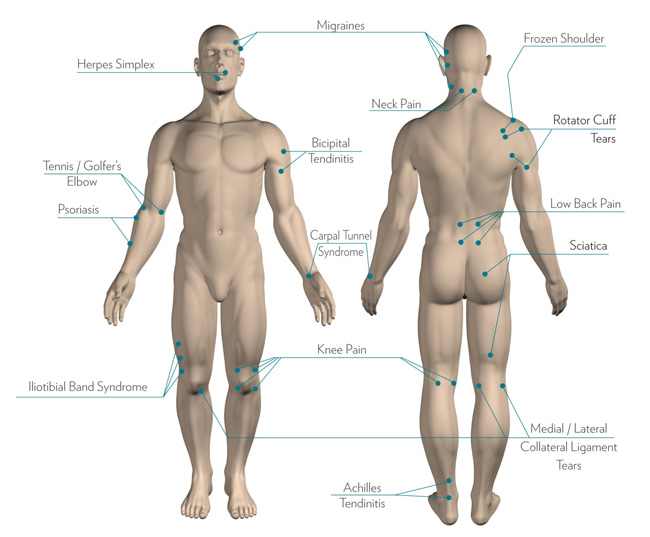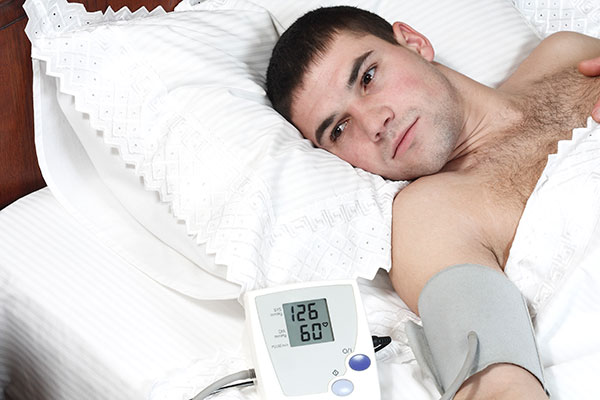How does Lower Level Laser Therapy (LLLT) work?
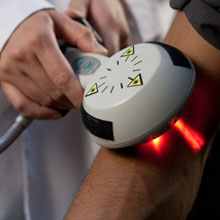 LLLT uses therapeutic lasers to deliver a wavelength of monochromatic light in the 660 and 905 nanometer (nm) spectrum that penetrates up to 10 cm into the targeted tissue. These light particles known as photons stimulate the mitochondria in the target cells, causing an increased production rate of adenosine triphosphate (ATP), which provides cells energy in order to heal tissue at accelerated rates.
LLLT uses therapeutic lasers to deliver a wavelength of monochromatic light in the 660 and 905 nanometer (nm) spectrum that penetrates up to 10 cm into the targeted tissue. These light particles known as photons stimulate the mitochondria in the target cells, causing an increased production rate of adenosine triphosphate (ATP), which provides cells energy in order to heal tissue at accelerated rates.
Why and how is cold laser therapy effective?
Much of the safety and effectiveness of cold laser therapy lies in its ability to trigger the body to heal itself. Penetrating into targeted tissue, laser light stimulates mitochondria in target cells to produce additional ATP, which fuels cell repair and regeneration. The laser simply jumpstarts the healing process and since the laser used operates within a specific wavelength range that is non thermal (the "therapeutic window"), there is no risk of tissue damage or other complications.
A wide variety of studies on the safety and effectiveness of cold laser therapy have been conducted by medical professionals from across the globe. Theralase also regularly conducts research and clinical trials to support the use of and discover new applications for laser technology.
- Some recent topics include:
- Laser Therapy in the Management of Chronic Myofascial Pain of the Neck
- Action of Diode Laser in Orthopaedics and Traumatology
- Effects of Laser Therapy in the Management of Lateral Epicondylitis
- Acute Cervical Pain Relief with Gallium Arsenide (GaAs) Laser Radiation
- Efficacy of Low Level Laser Therapy for Fibromyalgia
Theralase utilizes dual wavelength super pulsing technology (630 nm visible red laser diodes and 905 nm super-pulsed near infrared laser diodes) to be the only laser known to activate all three known cellular pathways simultaneously.
Adenosine Triphosphate (ATP) Pathway - Acceleratees Healing
Activated By 630-670 nm, Visible Red Light
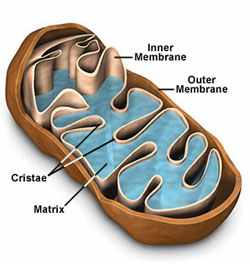 Cells that lack energy are unable to participate in the healing process. Light energy is delivered to injured cells which in turn absorbs the light and converts it into food energy and uses it to replenish themselves. Once cells are fully recharged they are able to replicate and divide, and build upon one another to heal the injured area. Theralase stimulates the mitochondria of the cell to produce more ATP (energy) thus repairing damaged tissue through the phosphorylation of glucose to ATP via the Kreb's Cycle and Electron Transport Chain. Photons with wavelengths between 630nm - 670nm increase the speed at which the mitchondria can absorb glucose and convert it into ATP. Theralase uses 660 nm visible red laser light, which is at the peak excitation of cytochrome C oxidase (a critical cytochome in the Electron Transport Chain used in the phosphorylation of glucose into ATP)
Cells that lack energy are unable to participate in the healing process. Light energy is delivered to injured cells which in turn absorbs the light and converts it into food energy and uses it to replenish themselves. Once cells are fully recharged they are able to replicate and divide, and build upon one another to heal the injured area. Theralase stimulates the mitochondria of the cell to produce more ATP (energy) thus repairing damaged tissue through the phosphorylation of glucose to ATP via the Kreb's Cycle and Electron Transport Chain. Photons with wavelengths between 630nm - 670nm increase the speed at which the mitchondria can absorb glucose and convert it into ATP. Theralase uses 660 nm visible red laser light, which is at the peak excitation of cytochrome C oxidase (a critical cytochome in the Electron Transport Chain used in the phosphorylation of glucose into ATP)
Theralase stimulates the mitochondria of the cell to produce more Adenosine Tri Phosphate (ATP or basic cell energy) to accelerate tissue repair. (Proceedings of the National Academy of Science 2003)
Nitric Oxide (NO) Pathway - Decreases Inflammation
Activated By 905 nm, Near Infrared Red Light
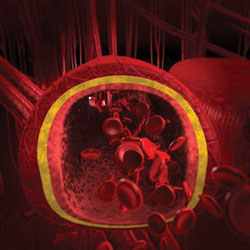 When tissue injury occurs, the inflammatory process is initiated to immobilize the area to prevent further damage, providing us with an indication that the body is hurt. This process is usually associated with pain caused by inflammation pressuring nerve endings. In order to reabsorb this interstitial fluid and decrease inflammation in the region, the body produces nitric oxide (NO), which has been proven to relax the lymphatic system causing it to become more porous allowing the reabsorption process to occur. This process not only reduces inflammation but causes temporary vasodilation (increased diameter of capillaries) bringing much needed oxygen, fuel molecules and other metabolites to the injured tissue aiding in their natural healing.
When tissue injury occurs, the inflammatory process is initiated to immobilize the area to prevent further damage, providing us with an indication that the body is hurt. This process is usually associated with pain caused by inflammation pressuring nerve endings. In order to reabsorb this interstitial fluid and decrease inflammation in the region, the body produces nitric oxide (NO), which has been proven to relax the lymphatic system causing it to become more porous allowing the reabsorption process to occur. This process not only reduces inflammation but causes temporary vasodilation (increased diameter of capillaries) bringing much needed oxygen, fuel molecules and other metabolites to the injured tissue aiding in their natural healing.
Independent research proves that the proprietary Theralase 905nm super-pulsed laser Technology increases the production of nitric oxide (NO) by over 700%, increasing vasodilation and decreasing inflammation versus other competitive wavelengths. (Lasers in Surgery and Medicine, 2009).
Lipid Absorption Pathway - Removes Pain
Peak Activation By 905 nm, Near Infrared Red Light
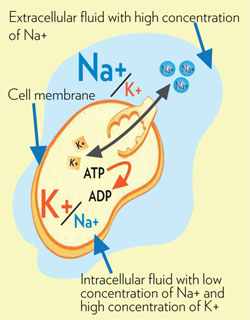 Pain results when a stimulus causes action potentials to rapidly propogate along a nerve cell. These actions potentials are primarily due to an expulsion of positively charged sodium ions (Na+) and an influx of potassium (K+) ions into the nerve cell altering the electrical potential across the membrane. The peak absoption of lipids is in the 905 nm to 910 nm range. Laser light is thus directly absorbed by receptors within the bi-lipid cellular membrane of nerve cells. Once absorbed, the laser light will increase the porosity of the cellular membrane allowing for a reabsorption of sodium ions and expulsion of potassium ions across the cellular membrane rebalancing the sodium-potassium pump and removing the pain signal at source.
Pain results when a stimulus causes action potentials to rapidly propogate along a nerve cell. These actions potentials are primarily due to an expulsion of positively charged sodium ions (Na+) and an influx of potassium (K+) ions into the nerve cell altering the electrical potential across the membrane. The peak absoption of lipids is in the 905 nm to 910 nm range. Laser light is thus directly absorbed by receptors within the bi-lipid cellular membrane of nerve cells. Once absorbed, the laser light will increase the porosity of the cellular membrane allowing for a reabsorption of sodium ions and expulsion of potassium ions across the cellular membrane rebalancing the sodium-potassium pump and removing the pain signal at source.
Photons with wavelengths of 905 nm effectively removes the pain signal frm source by rebalancing the sodium potassium pathway. Theralase laser technology effectively removes the pain signal at source by rebalancing the sodium potassium pathway. (Harvard Medical School 2010)
Why use LLLT?
Many LLLT systems are portable, and treatments can be done virtually anywhere there is a trained technician. LLLT systems are comparatively inexpensive and provide solutions to a wide range of clinical conditions with a single device. LLLT has been proven to work more quickly and often at an earlier stage than conventional surgery or therapy; thus, reducing treatment and recovery times.
Put simply, LLLT offers cost savings for institutions and better health care for patients at reduced costs.
Is LLLT safe?
LLLT is painless and is well tolerated by patients of all ages and conditions. During more than 35 years of clinical use, it has never resulted in a serious side effect.
Therapeutic laser systems are athermic (no heat) and therefore incapable of causing tissue damage. As well, cells have a natural ability to resist over-stimulation, meaning it is not possible to harm tissue by overdosing, as long a you use a therapeutic laser that is used in the therapeutic window and remains below the Maximum permissible Exposure (MPE) of tissue.
The Theralase Superpulsed Laser System
Neuromuscular Skeletal conditions are common in all of us. We can all experience sprains, strains and pain that just won't go away resulting from repetitive strains in our work place or from trauma in our everyday lives. Pain and inflammation are things we've grown to accept as something we probably will just have to live with. Medical practitioners across North America have discovered a modern medical technology that heals injuries safely and effectively on a cellular level. This medical technology is the Theralase line of therapeutic medical laser systems.
The Theralase superpulsed laser system can penetrate up to 4 inches into tissue, to promote cellular regeneration at the source of injury. Laser energy helps to repair damaged cells by accelerating the body's natural healing mechanisms. Depending on the severity of the injury, your patient can return to an active lifestyle pain-free within a few weeks versus months or years of life altering pain.
Treatable Conditions
The Theralase superpulsed laser has over 24 clinically proven pre-programmed treatments for human applications.
